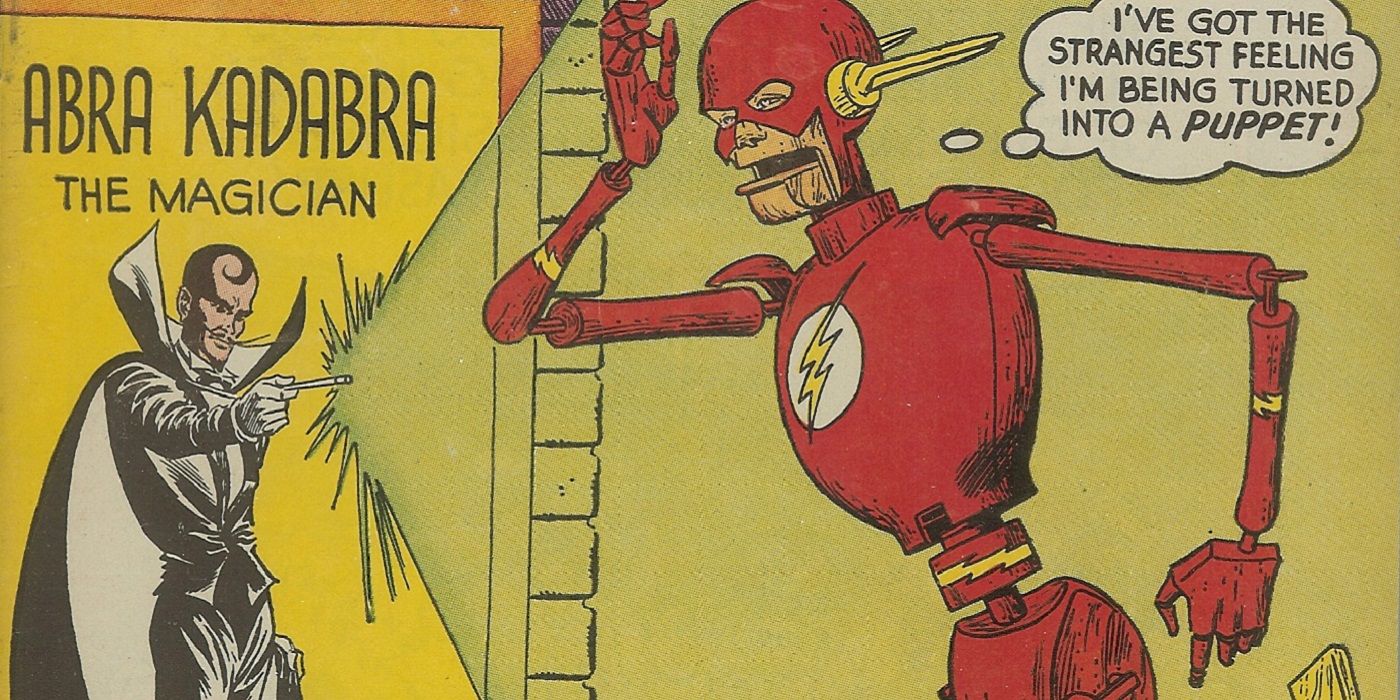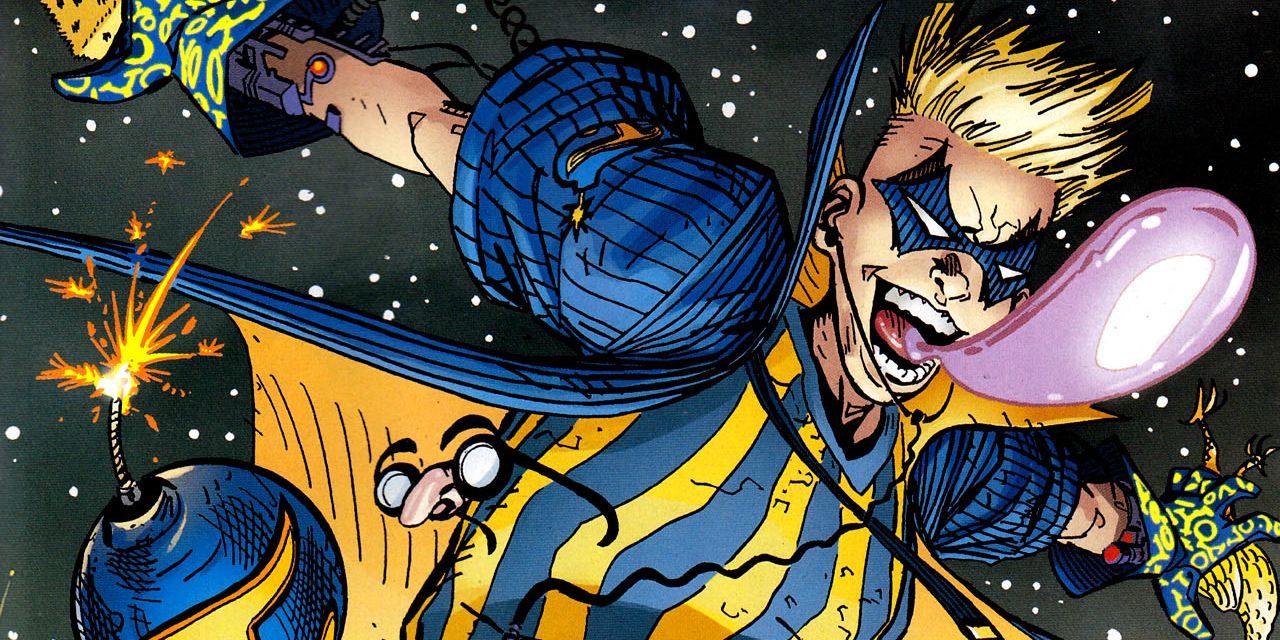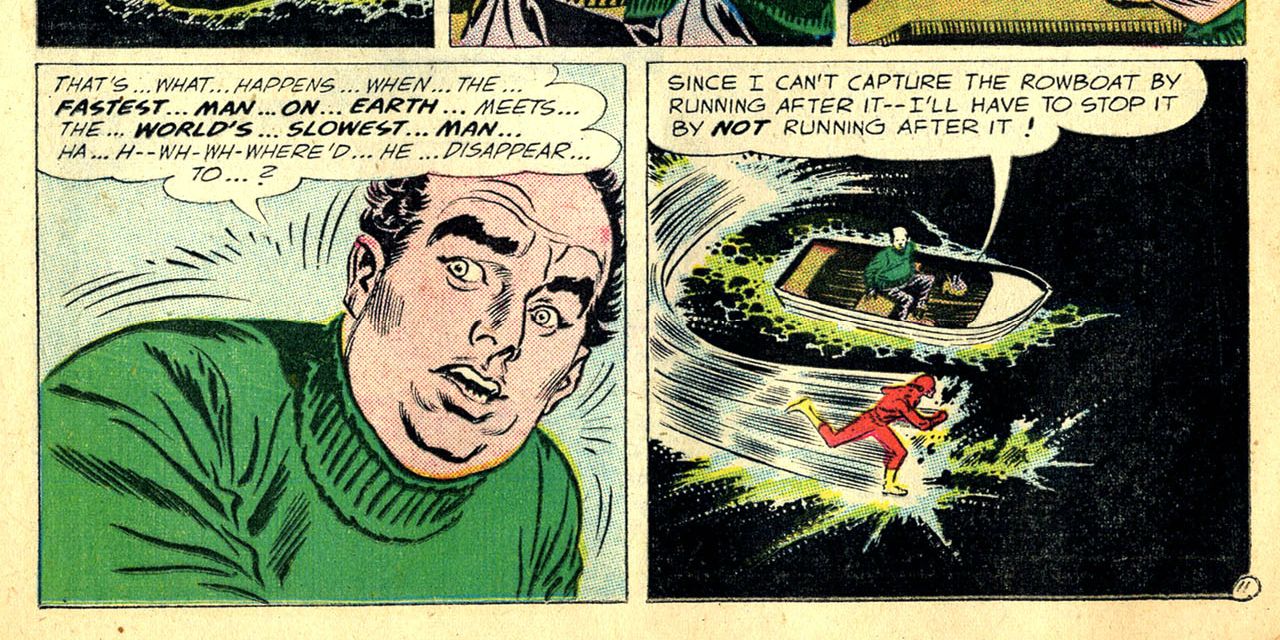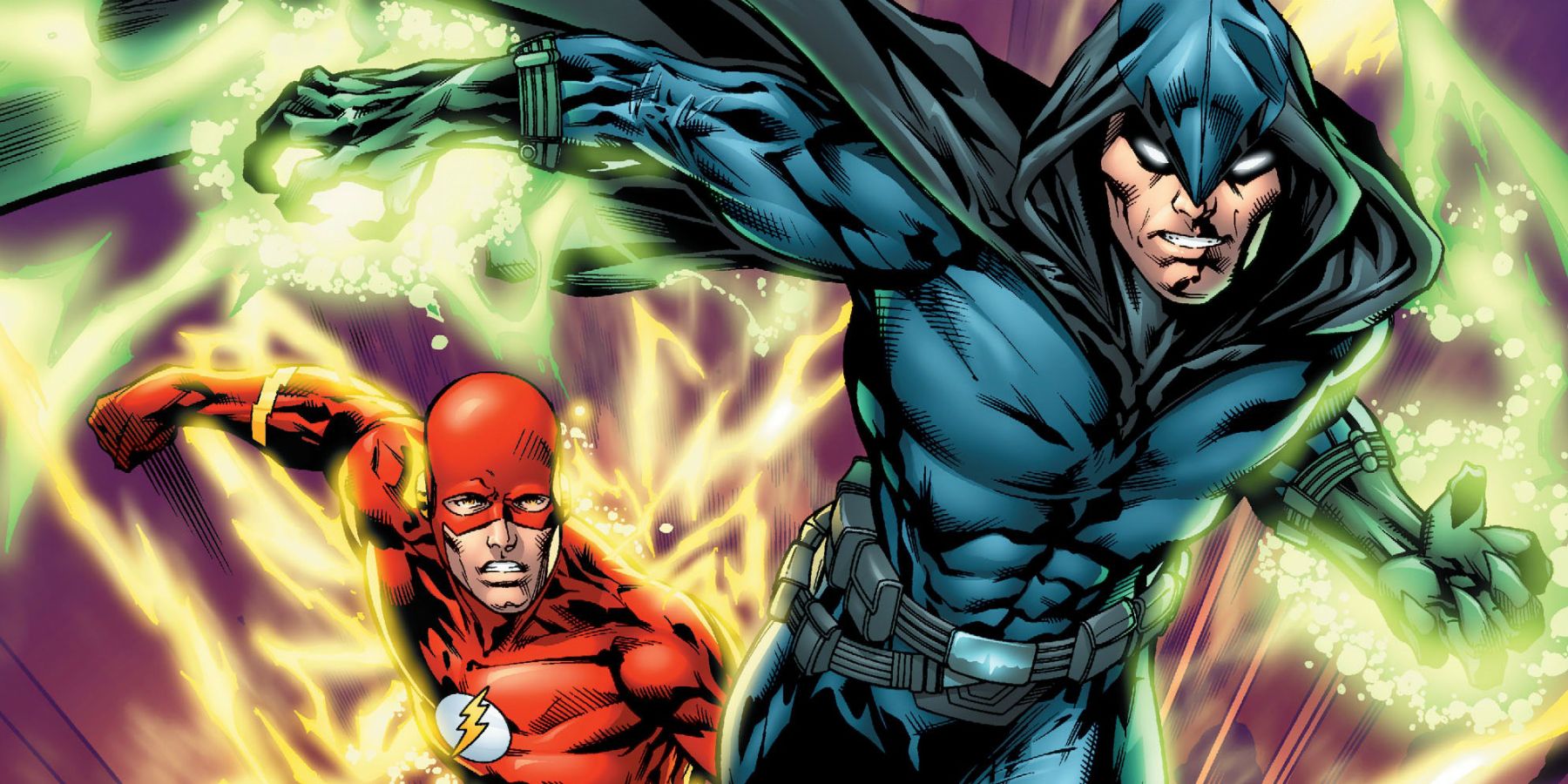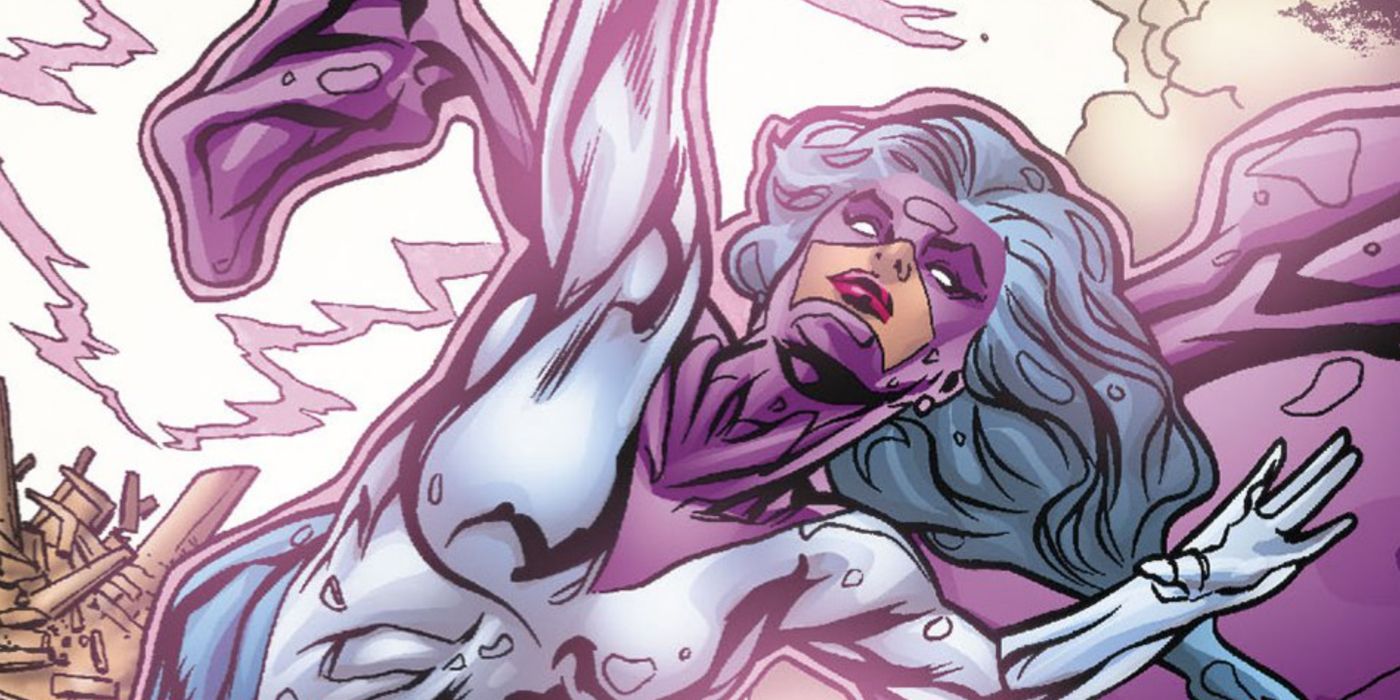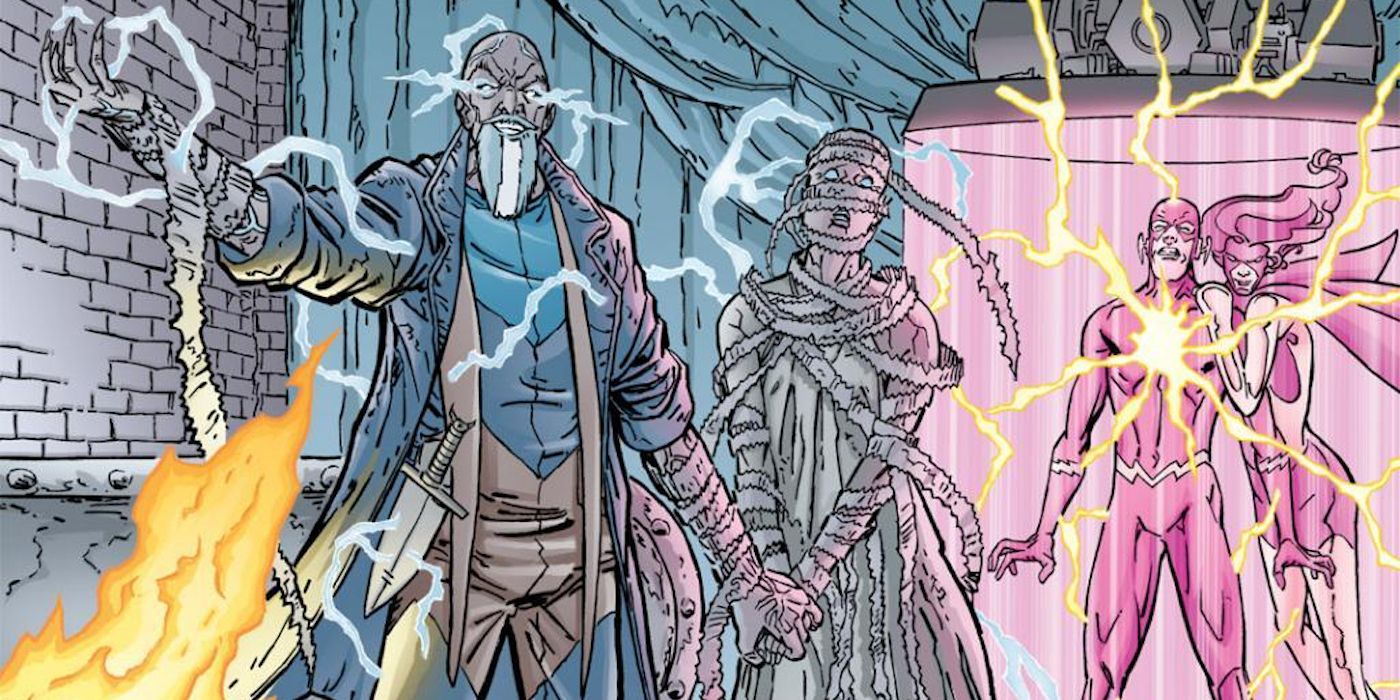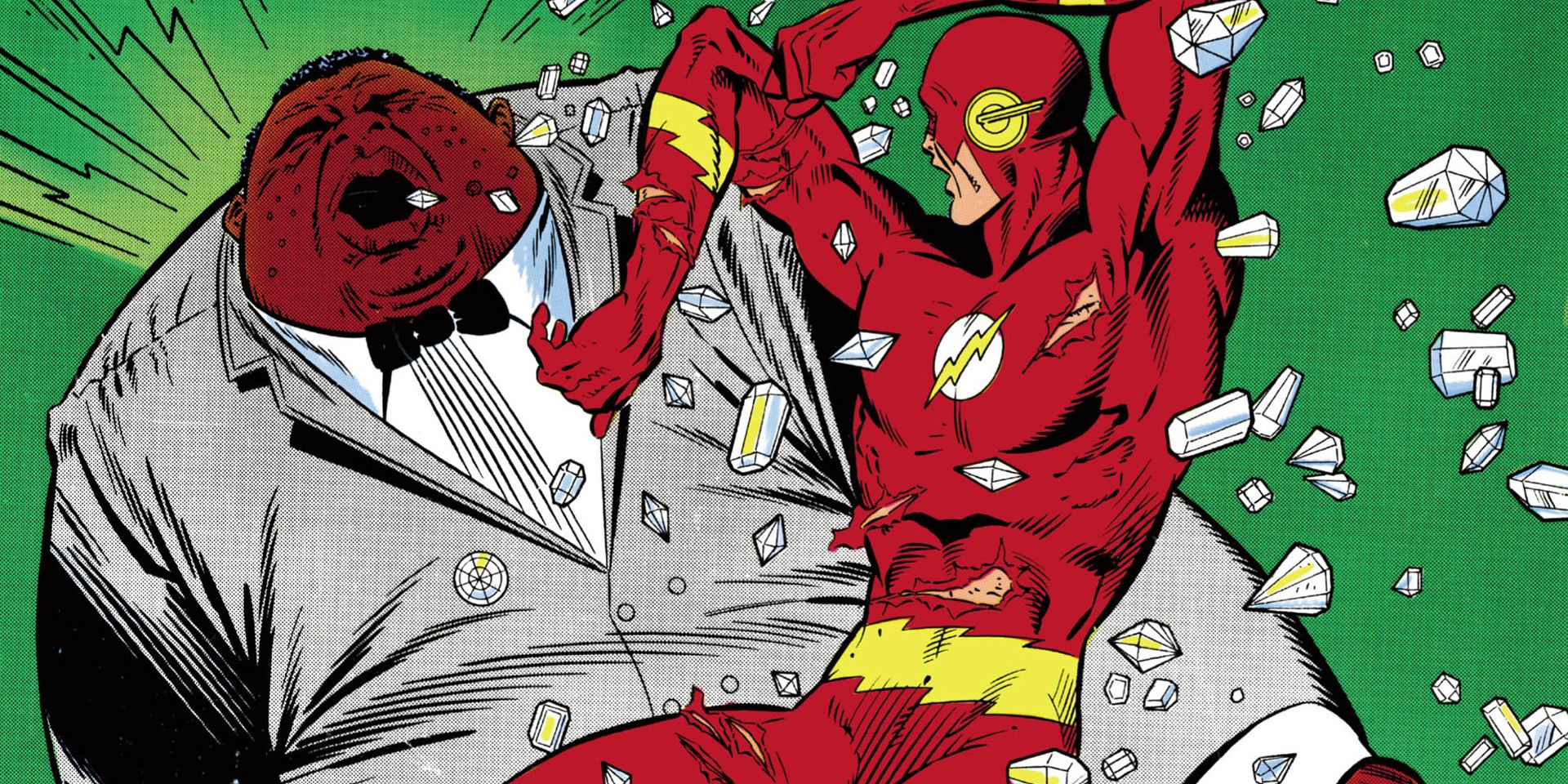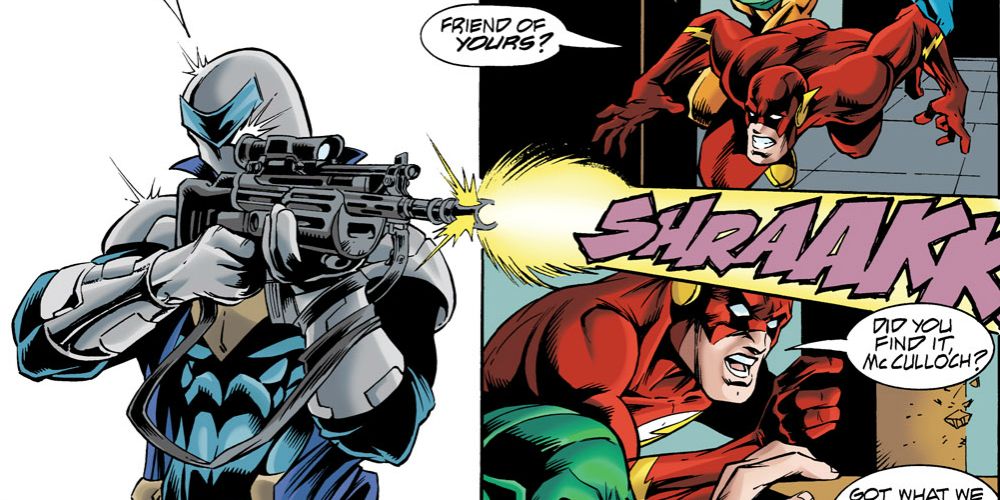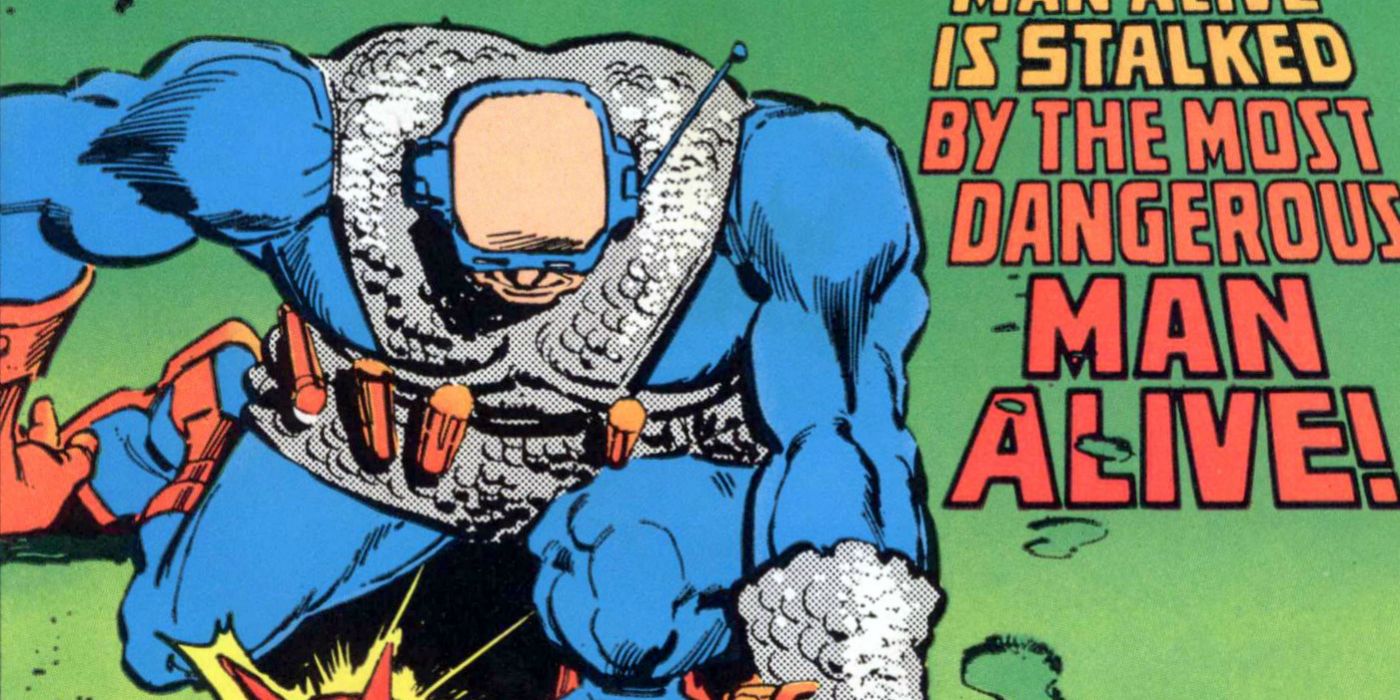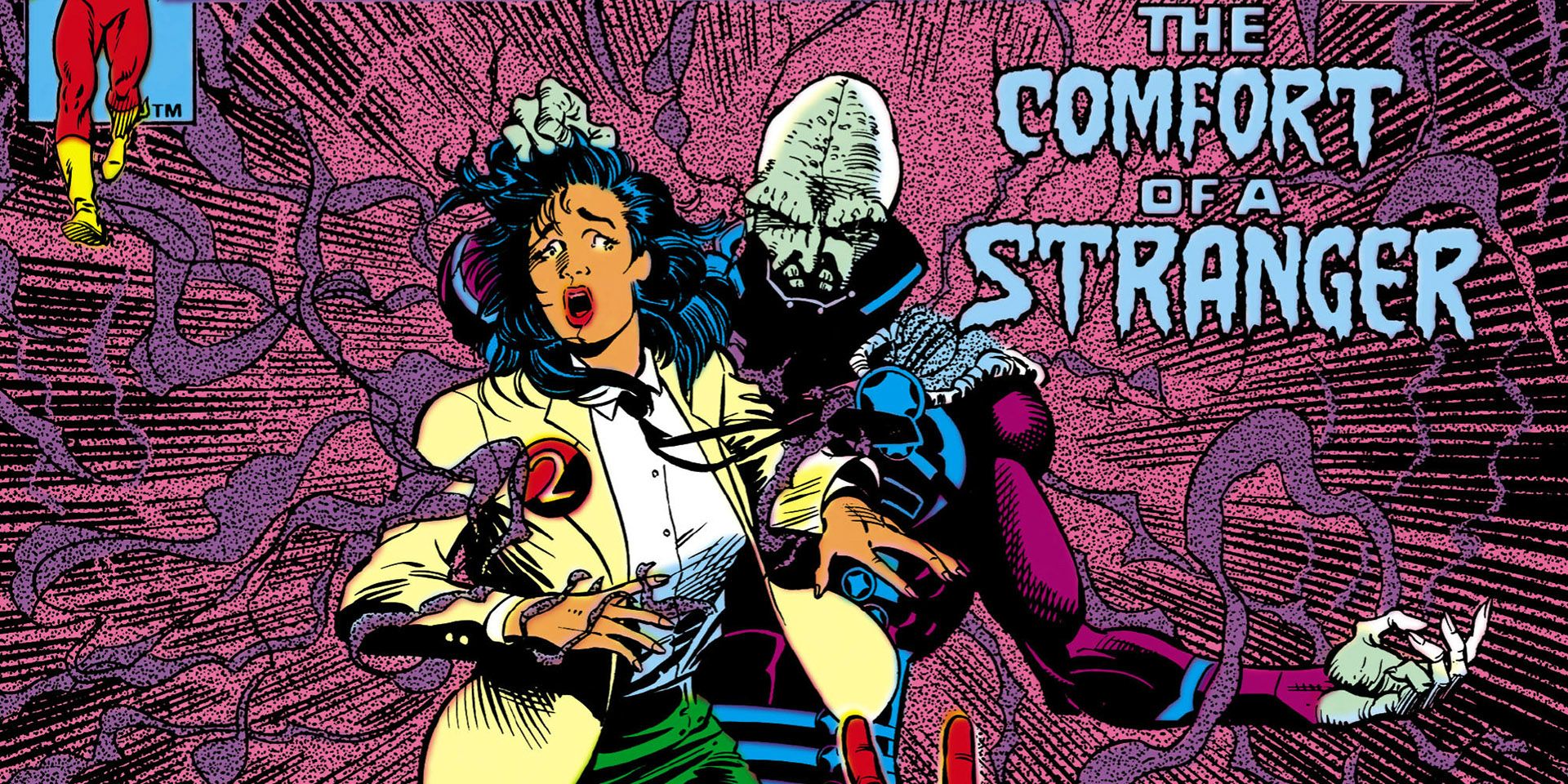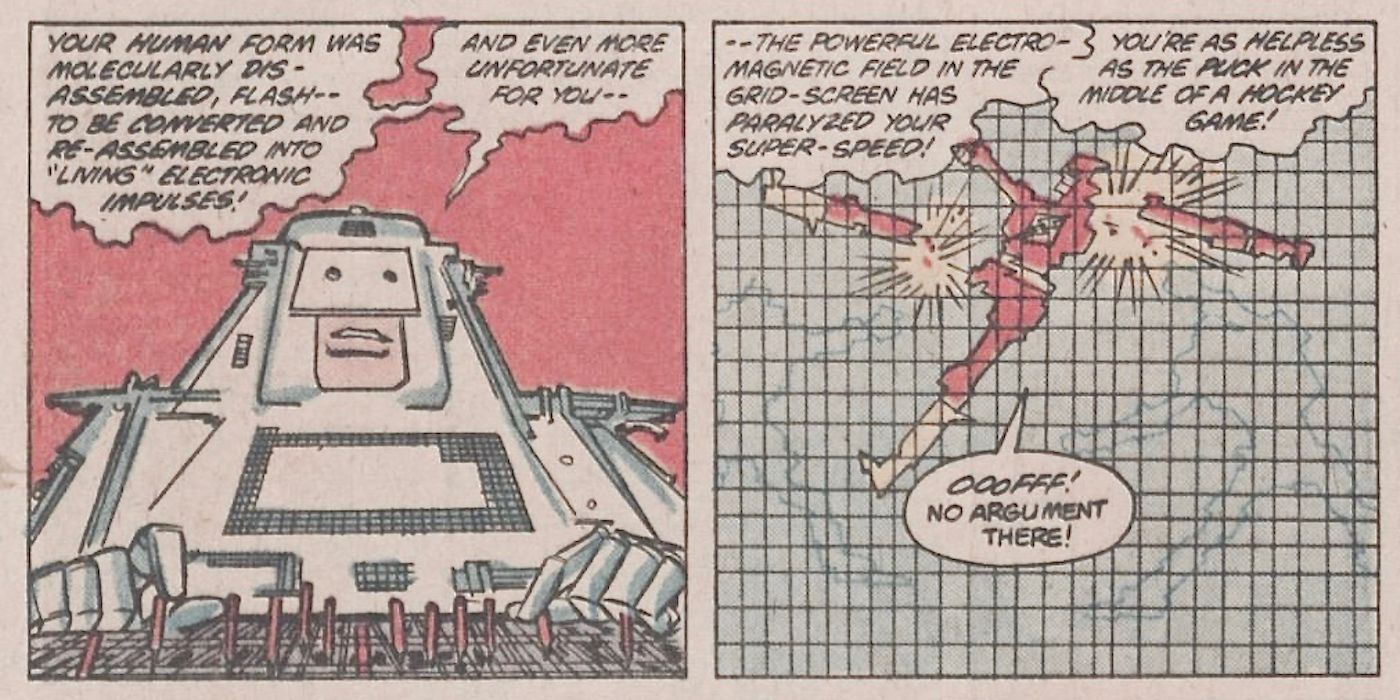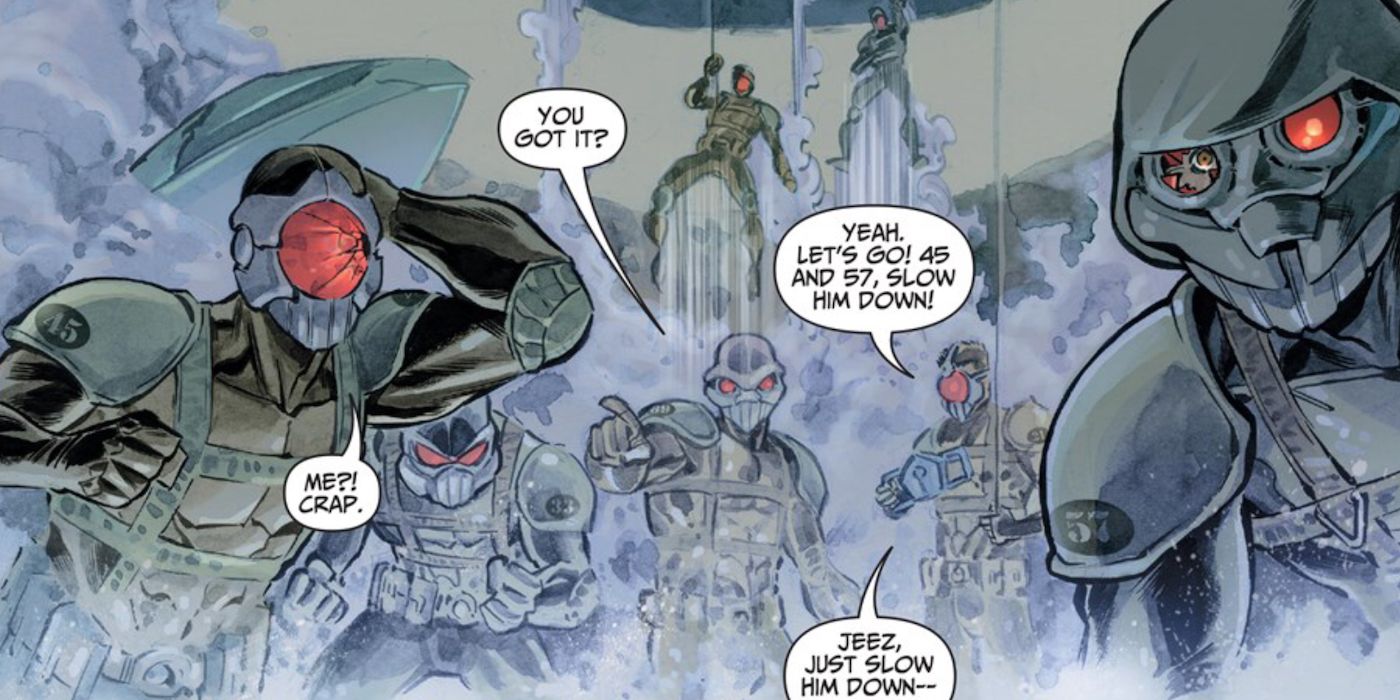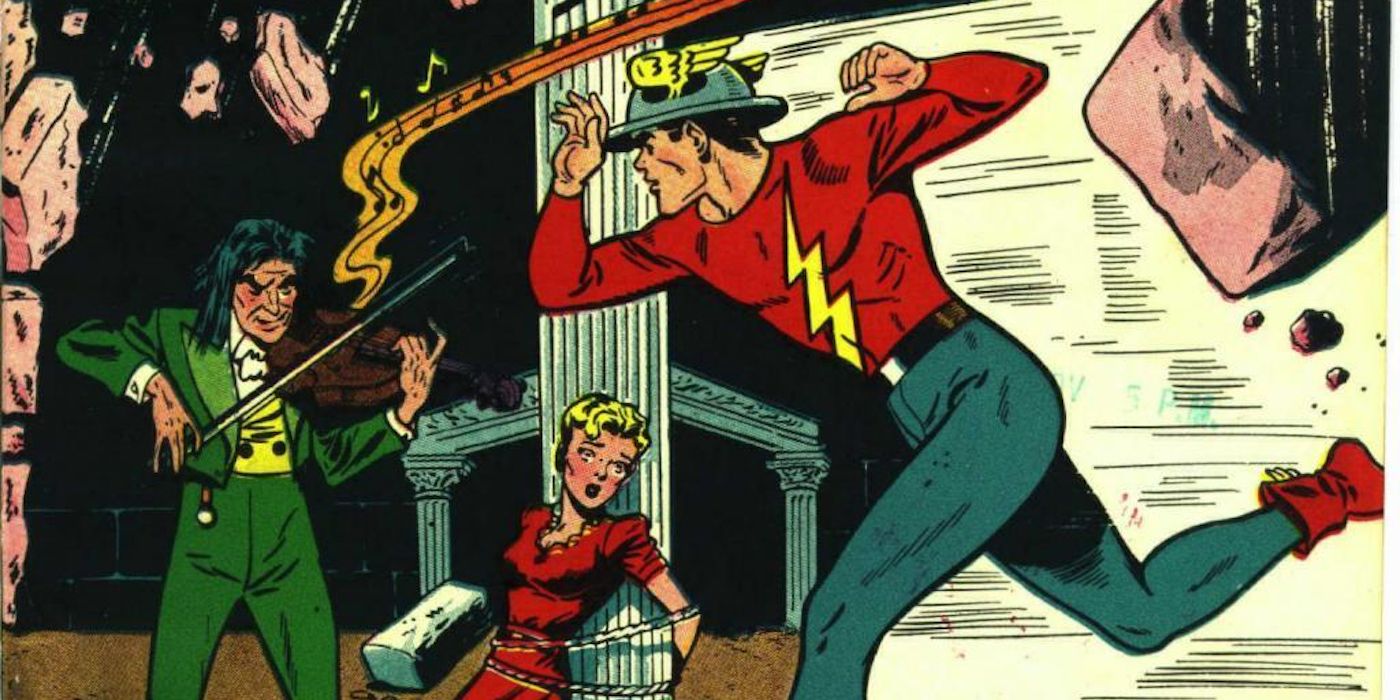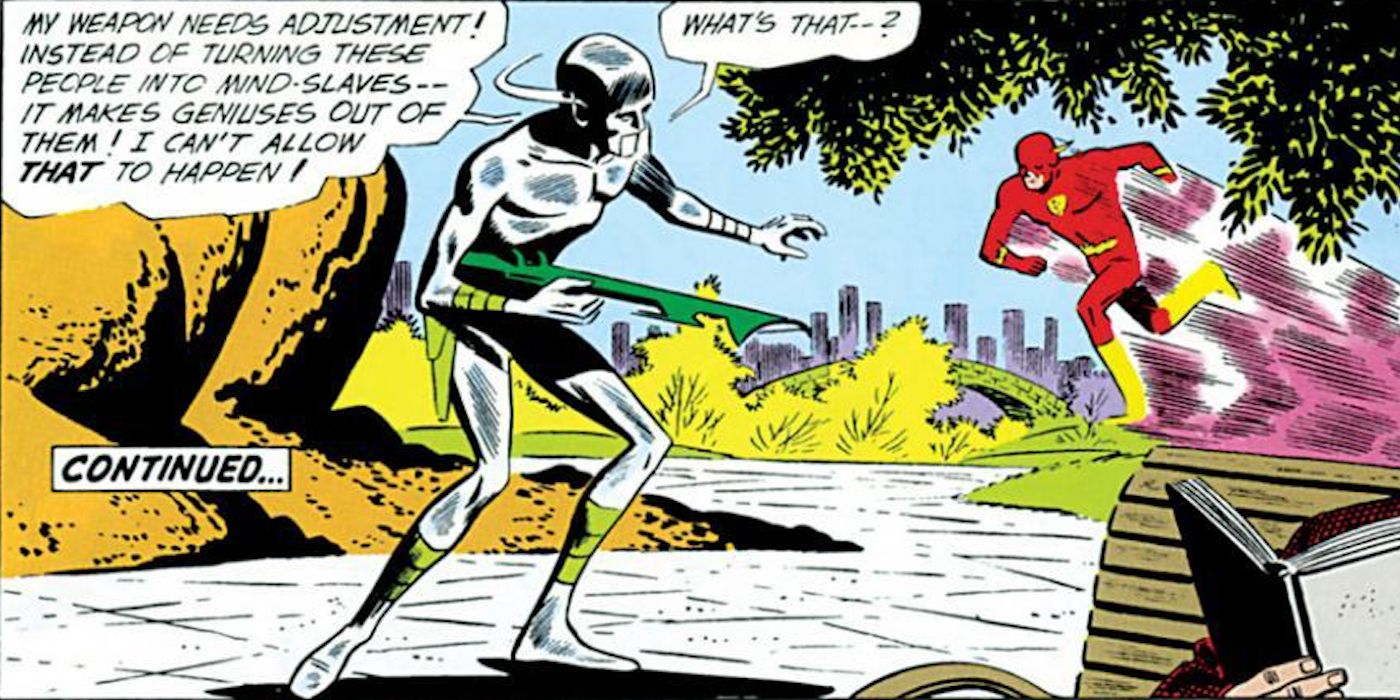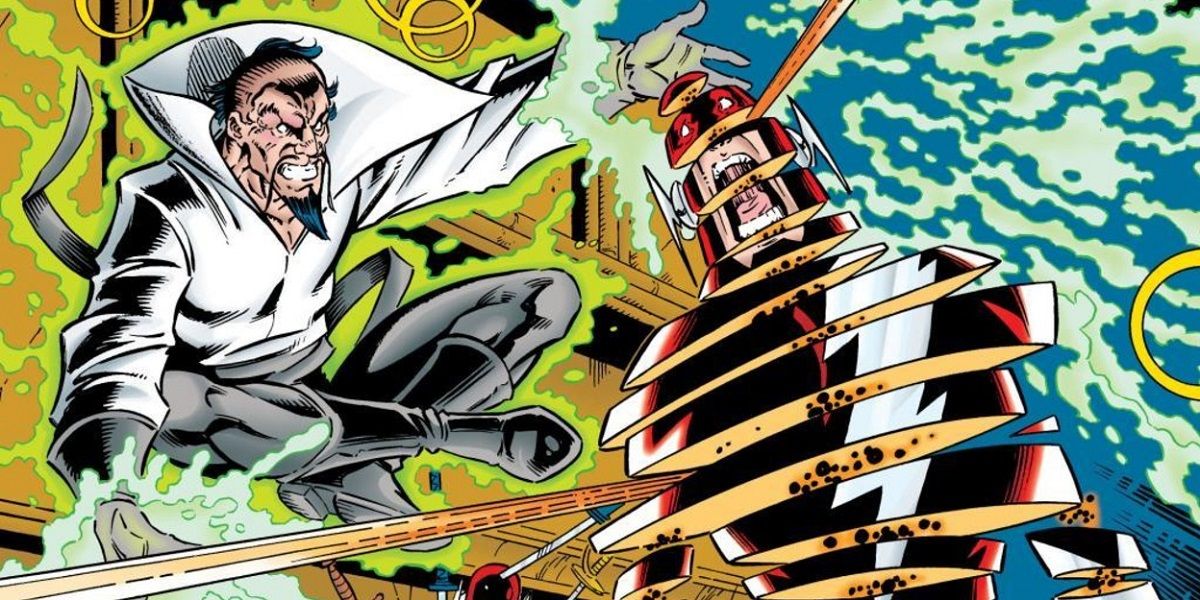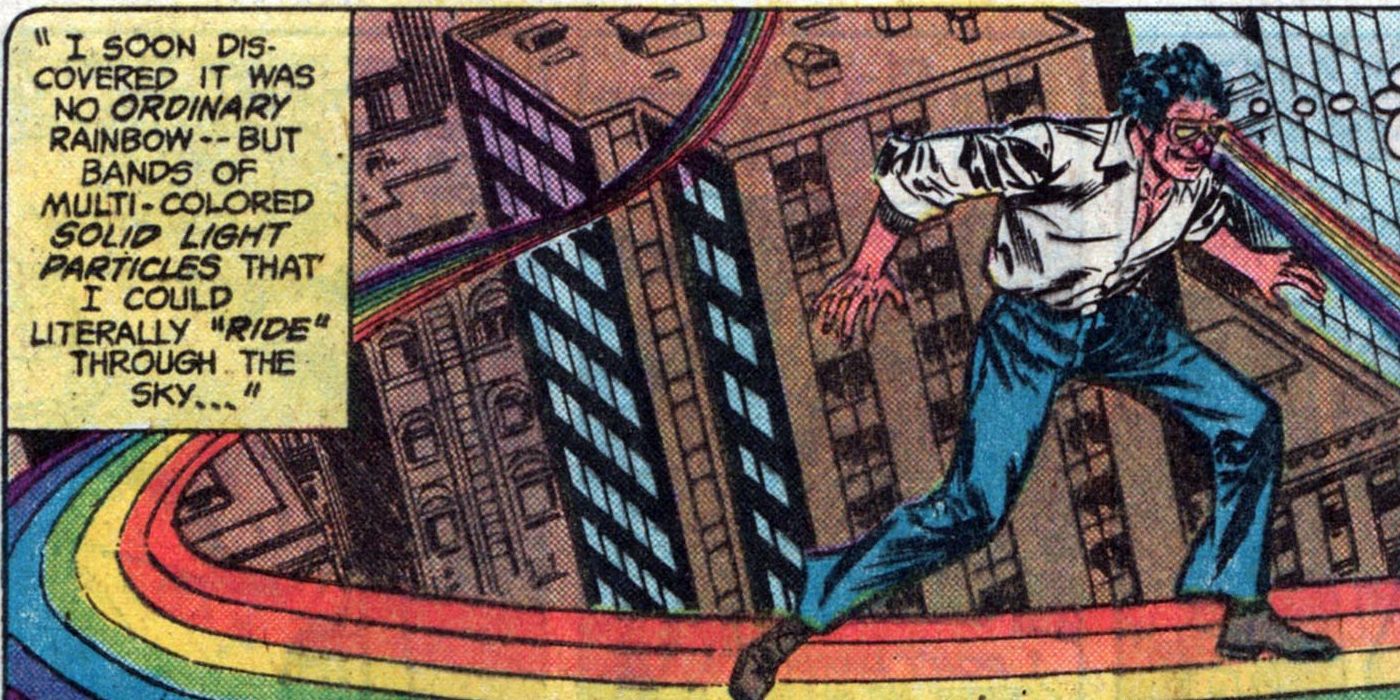The Flash is one of the oldest and most influential characters in comic book history, having been in existence for over 75 years. Throughout those years, there have been multiple speedsters to carry the mantle of the Flash, namely Jay Garrick, Barry Allen, Wally West, and Bart Allen.
Each and every character has brought his own unique traits to the superhero, including new and sometimes old/reimagined villains. When it comes to comic book characters, the heroes' greatest foes typically are nefarious counterparts of themselves. In the case of the Flash, we have villains such as the Reverse-Flash, Professor Zoom, and now, Godspeed.
While the Scarlet Speedster has a hefty volume of iconic villains, including the aforementioned speedsters, with decades of history and varied continuities, there have also been a great deal of silly, nonsensical, and downright terrible villains.
With the upcoming third season of The Flash on the way (as well as a film adaptation of the character), we thought it was time to run through the speedster's inferior villains, some of whom will appear in the new season. So, in no particular order, here are the 15 Worst Flash Villains.
15. Trickster (Axel Walker)
Longtime comic book fans will recognize James Jesse as the original Trickster, one of the better Flash villains, who was played by legendary actor Mark Hamill in both the 1990 The Flash TV series (with John Wesley Shipp as Flash) and the 2014 The Flash TV series (with Grant Gustin as Flash). However, like many characters in comic books, another character took over the Trickster mantle when Jesse was working with the FBI: Axel Walker.
Created by Geoff Johns and Scott Kolins, Axel Walker made his debut as the second Trickster by stealing the clothes and gadgets of the original, retired Trickster, with the help of Blacksmith, the leader of an underground black market. Even though he proved himself to be a decent criminal, Axel Walker wasn't quite as good as his predecessor, nor did he produce substantial, unique tricks of his own. Moreover, despite being accepted into the Rogues, Walker never once proved himself to be a worthy opponent for the Flash.
14. Turtle Man
Similar to the Trickster, there have been multiple characters who have assumed the name Turtle. The first Turtle debuted during the Golden Age of Comics as an adversary of Jay Garrick, the original Flash. As his name suggests, the Turtle used his perpetual slowness to his advantage when committing his crimes, mainly robberies. While he relied heavily on his slowness as a weapon, it was his strategic planning that made him a fitting opponent.
Soon after Barry Allen made his introduction as the second Flash in the Silver Age of Comics, the first villain he faced in his debut issue was the Turtle's successor, Turtle Man. Embodying the same ability as his predecessor, Turtle Man utilized his slow movements to his advantage when fighting the Scarlet Speedster. While the Turtle Man has indeed given Flash a run for his money once or twice, he's nowhere near as proficient as the Golden Age Turtle. In fact, it's not until he's given speed-stealing abilities that he becomes a somewhat decent villain.
13. Griffin
Griffin Grey aka the Griffin is one the newer villains on this list. Whereas most of them have been villains of Barry Allen or Wally West, the Griffin was a close friend-turned-enemy of the fourth Flash, Bart Allen. By the time he was introduced in 2006, there had already been a plethora of notable adversaries for the three most well-known Scarlet Speedsters. And, unless a villain is another speedster, like Godspeed, the character is typically at a handicap from the outset.
In the case of the Griffin, he was once a speedster. Well, to an extent. Engulfed in an explosion, Griffin gained the ability to run at superhuman speed, which he first attempted to use for good. However, he had an ulterior motive for his glamorous heroics: fame. Unfortunately, using his powers only made him age faster; and since he failed to discover the secret to remaining young, he ultimately died from overuse of his powers -- an anticlimactic end for a guy who who had archenemy potential.
12. Magenta
Frances Kane aka Magenta has all the makings of a typical superhero origin story: as the sole survivor of a car crash that killed her brother and father, she's imbued with powers she doesn't understand and closely associated with notable superheroes, such as her old friend and one-time boyfriend, Wally West. Unfortunately, things didn't go quite as some had hoped.
As evidenced by the latest issue of The Flash comics, not everyone with superpowers wants to be a superhero (or supervillain); many of them just want to go about living their lives. Magenta was one of those people, which is why she ended up leaving Wally after feeling pressured to become a superhero -- a decision that ultimately led her down a path of villainy.
After a series of convoluted story arcs, one involving her being possessed by a part of Raven's demonic father's soul, Magenta eventually joined the Cicada cult (more on him in a moment) and led the mission to capture the Flash. Despite the potential for a strong, personal story arc involving Wally West, Magenta's downfall happened quickly and insignificantly. Here's hoping her appearance on this season of The Flash has a bit more to it.
11. Cicada
As previously mentioned, after turning evil, Magenta became a prominent member of the Cicada cult, a group of people who follow the villain David Hersch aka Cicada. Before he became an eminent leader, Hersch once murdered his wife, and in his despair, he tried and failed to take his own life. Instead, he was struck by lightning, which, ironically, granted him eternal life.
Hersch developed the ability to draw the life-force of others in order to not only prolong his own life but to also heal otherwise mortal wounds. Furthermore, in his endeavor to resurrect his wife, Hersch attempted to draw the life-force of all the people the Flash had saved. Despite his powers and devout zealots, Cicada was ultimately defeated by the revelation of the truth: that he killed his wife -- not exactly a fitting end for a villain who could draw the life out of the Flash himself.
As a side note, eagle-eyed viewers will notice that the restaurant Amanda Waller conducts her meetings in in David Ayer's Suicide Squad is named Cicada's.
10. Chunk
We don't know much about Chester P. Runk other than that he was once a scientist who developed a teleportation device, a machine he ended up merging with as a result of a lab accident. Unfortunately, despite his potential, Chester became a bizarre character who was eventually forgotten.
The accident bestowed upon him teleportation, in addition, of course, to superhuman strength and durability. However, in order to prevent the machine from consuming him, Chester was forced to eat more than 47 times his own body weight, thus transforming him into the villain Chunk, albeit briefly.
Chunk one day befriended Wally West after the Flash convinced him to return those he once imprisoned in the so-called Void (a place he was able to send people as a result of his accident) back to Earth. Moreover, after giving up his wicked antics, Chunk opened a business, providing a service for people to get rid of things they no longer wanted.
9. Plunder
When the Flash, Captain Cold, and Mirror Master traveled to an alternate reality, they were confronted by Jared Morillo aka Plunder, an assassin hired by his world's version of the genius supervillain Thinker to destroy the three travelers, for their presence in his universe was threatening its existence. Of course, Plunder failed to complete his objective. However, he did manage to hitch a ride with the travelers when they returned to their universe.
Unlike virtually all of the other characters on this list, the concept behind Plunder isn't bad; it was rather how he was used following his first encounter with the Flash that tainted his potential for greatness. After attempting to save his universe, Plunder becomes no more than a pawn for whoever leads the Rogues, whether that person is Blacksmith or The Top. Someone like Plunder had the chance to become someone like Deadshot, but unfortunately became anything but.
8. Big Sir
In the '80s, when it came time for DC Comics' 50th anniversary, the publisher unveiled plans for their first massive crossover event, titled Crisis on Infinite Earths, inspired by the success of their earlier annual Crisis series. However, shortly before the event took place -- in which the supervillain Monitor abolished the multiverse which resulted in a new, coherent continuity being established -- the Monitor created an armored suit that endows his wearer with various superhuman abilities.
With a suit like this, which is capable of defeating the strongest of superheroes, you would think that the Monitor would entrust it with a devoted ally, someone competent enough to fight said superheroes. Well, you'd be wrong, for the suit ended up in the hands of the Rogues, who gifted the suit to the mentally challenged character Dufus P. Ratchet.
His mental illness, combined with the power of the suit, made Ratchet aka Big Sir susceptible to suggestion, and he was encouraged by the Rogues to attack the Flash. Unfortunately, he lost that battle, and we don't have to wonder why. Interestingly, Flash later took Ratchet to Gorilla City, where their advanced science was able to not only cure Ratchet of his illness but enhance his intelligence to near Einstein levels.
7. The Comforter
In Gotham City, the villain Deacon Blackfire once rounded up all the homeless people in the city and turned them into his own personal army, which he used to raid and pillage homes. One of those homes belonged to Will Jones, whose wife, Elise, was murdered during the raids. As a result, Jones developed an unyielding hatred for the homeless.
After developing the metahuman ability to phase people, Jones channeled his hatred for the homeless by working at a shelter in New York City, where he would continuously murder the homeless by phasing them into oblivion, believing he was giving them the "comfort of death." This attracted the attention of the Turtle, who hired Jones to kill the Flash; the supervillain even gave Jones a suit to enhance his powers.
If not only for the silly name Jones took upon himself, the Comforter was anything but a worthy opponent for the Flash. When the Flash, Linda Park, and Pied Piper set a trap for the villain, his powers backfired and killed him. All of this happened in a single issue, which goes to show how ineffective the Comforter truly was.
6. Colonel Computron
While heroes tend to have elaborate origin stories, villains usually just show up one day and decide to wreak havoc for a largely unknown reason. Basil Nurblin aka Colonel Computron was one of those villains. A disgruntled former employee of the Wiggins Toy Corporation, Nurblin was one of the company's top workers. After he was cheated out of the earnings for his prized toy, Captain Computron, he decided to exact revenge.
Of course, he chose the fitting villainous pseudonym of Colonel Computron and wore an armored suit that embodied his cherished toy. Despite good intentions by the writers and editors, Colonel Computron was a failed experiment by DC Comics to capitalize on the burgeoning Atari video game era of the early '80s. Although the real Colonel Computron was defeated by Rampage and Phantom Lady, the character was later repurposed by the black market leader Blacksmith, who uses robotic Computrons to safeguard the market's network.
5. Mob Rule
Unlike all of the other entries on this list, this entry focuses on a team of villains rather that one particular character. However, the team, Mob Rule, is not exactly a traditional squad, but is instead comprised of multiple duplicates of the same character, Manuel Lago, Barry Allen's old friend. When Lago was captured by the organization Basilisk and subsequently tortured, it was revealed that when he lost a limb, not only would the limb grow back, but a new duplicate of himself would appear.
These duplicates, while near perfect replicas of the original Manuel Lago, are unique in their own ways. The psychic link they share allows them to communicate telepathically with one another. However, unlike all of the other characters on this list, the Mob Rule aren't specifically villains, nor are they heroes. All they want to do is survive, and sometimes that can lead them down a dark path. Unfortunately, what was to be a personal conflict for Barry Allen ended up being another run-of-the-mill adversary for the Scarlet Speedster.
4. Fiddler
As with many characters in the DC Universe, Isaac Bowin aka the Fiddler has two origin stories -- one pre and one post-Crisis on Infinite Earths. In either origin, Bowin develops the ability to produce intense musical vibrations by using a violin, which he uses to hypnotize his enemies, destroy objects, and even create force-fields.
Of course, the problem with using a violin as a weapon is, what will he do if he's confronted head-on by an opponent? His answer to that predicament was to attach various gimmicky weapons to his violin, such as blades. While such an ability sounds powerful, it's actually proven to be quite ludicrous in battle.
He was so inept that his fellow Secret Six members became disgruntled with his performance, which prompted the team's leader, Mockingbird, to put an execution order out on him. It's not much later that Deadshot carried out the order and killed the Fiddler, whose position on the team was subsequently filled by Catman.
3. Katmos
While the first villain Barry Allen faced after becoming the Flash was Turtle Man, the first adversary of his self-titled comic series was Katmos, the sole survivor of an ancient metallic civilization that ruled the Earth over eight million years prior. Of course, when someone is the last surviving member of an entire race, they tend to enter a monomaniacal state of mind, wanting nothing but the resurrection of their people (e.g. General Zod in virtually every Superman story).
In the original story, Katmos attempted to construct a device that would enslave humankind. In his attempt to disrupt Katmos, the Scarlet Speedster was caught and entrapped in a casing that would make him 1,000 times heavier than normal, thus ensuring his enduring imprisonment. Naturally, Flash escapes and apprehends Katmos, whom he couldn't catch before because of the villain's smooth, metallic skin which would slip from his grip (seriously) . Everything revolving around Katmos lacks in ingenuity and inventiveness, which is why we don't think we'll ever see him appear on The Flash TV series.
2. Abra Kadabra
Of all the villains on this list, perhaps the most recognizable would be Abhararakadhararbarakh aka Abra Kadabra, a magician from the 64th century who dreamed of being a successful stage magician. However, with technology having advanced considerably over the centuries, no one believes in magic anymore. Therefore, he decided to travel back to a time when people were still enamored with celebrity magicians: the 20th century.
Abra Kadabra has certainly become an enduring thorn in Flash's side, occasionally aligning himself with the Rogues. In actuality, he's one of the worst villains the Flash has ever faced -- and that may be because he shouldn't be a Flash villain. He'd probably be better off as a villain of Dr. Fate, Zatanna, or someone else with magical powers. Additionally, his singular purpose for villainy is to achieve fame, which is hardly a convincing aspiration for a member of the Rogues.
With Abra Kadabra's return in the latest issues of Titans: Rebirth, we hope DC Comics will improve upon the character, for he has so much potential for being a worthy villain if he only would let go of his dream of being a celebrity magician.
1. Rainbow Raider
Comic book publishers have a history of naming their heroes and villains after the characters' oft-ridiculous gimmicks. In the case of Rainbow Raider, he was named after his rainbow-beaming goggles. The goggles were a gift from his father, an optometrist who was attempting to discover a cure for his son, Roy G. Bivolo.
Roy, whose name closely resembles the color-spectrum acronym "ROYGBIV," has taken to calling himself the Rainbow Raider, a fitting name for someone who dresses in a rainbow-colored costume. Before turning to a life of crime, Roy always dreamed of being an artist; however, due to his colorblindness, his dreams were broken. He wouldn't be a comic book villain without having an ironic or on-the-nose origin story, right?
While comic books are known to have absurd villains improve later on, that is simply not the case with Rainbow Raider. The silliness of his powers fails to present a substantial threat to the Scarlet Speedster. And after all, it's hardly convincing for all of his villainy to derive solely from being colorblind.
---
Could any of these villains serve as a big bad for the Flash on The CW or in the DCEU? Which other Flash baddies should have made the cut? Let us know in the comments.
The Flash season 3 will premiere Tuesday October 4th at 8pm on The CW, Arrow season 5 will premiere in the same time-slot on Wednesday October 5th, Supergirl season 2 on Monday October 10th, and Legends of Tomorrow season 2 on Thursday October 13th.

